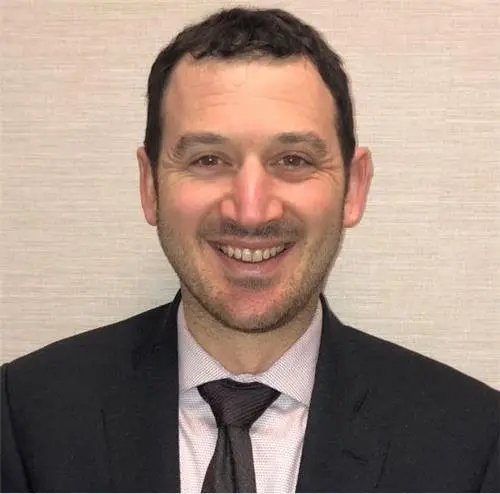1044 - A Proposal for 9th Edition Pathologic TNM Staging for Human Papillomavirus (HPV) Associated Oropharyngeal Squamous Carcinoma Incorporating Extranodal Extension
Presenter(s)

D. M. Routman1, A. W. Bogan2, C. N. Abdel-Halim3, B. G. Olson3, C. M. Hidalgo3, E. J. Moore3, D. L. Price3, M. L. Hinni4, J. R. Janus5, K. Price6, A. L. Holtzman7, S. C. Lester1, M. Neben Wittich1, J. M. Wilson1, S. H. Patel8, D. J. Ma1, L. X. Yin3, J. S. Lewis9, and K. M. Van Abel3; 1Department of Radiation Oncology, Mayo Clinic, Rochester, MN, 2Department of Qualitative Health Sciences, Section of Biostatistics, Mayo Clinic, Scottsdale, AZ, 3Department of Otolaryngology-Head and Neck Surgery, Mayo Clinic, Rochester, MN, 4Department of Otolaryngology, Mayo Clinic, Scottsdale, AZ, 5Mayo Clinic, Department of Otolarynoglogy, Jacksonville, FL, 6Department of Medical Oncology, Mayo Clinic, Rochester, MN, 7Mayo Clinic-Florida, Jacksonville, FL, 8Department of Radiation Oncology, Mayo Clinic, Phoenix, AZ, 9Mayo Clinic, Phoenix, AZ
Purpose/Objective(s):
Extranodal extension (ENE) is an important prognostic factor in head and neck cancer and predicts benefit of chemotherapy based on foundational EORTC/RTOG studies. This has been challenged in HPV(+) oropharyngeal squamous cell carcinoma (HPV(+) OPSCC), and the American Joint Commission on Cancer 8th Edition Pathologic Staging (AJCC8) does not include ENE as a criterion. We aimed to investigate pathologic factors associated with outcomes focusing on ENE in order to see whether its addition can improve AJCC8.Materials/Methods:
Demographics, comorbidities, disease characteristics, and oncologic outcomes for 1074 patients diagnosed with HPV(+) OPSCC treated with surgery at a multi-site center were analyzed. Univariate (UV) Cox proportional hazard models (Coxph) were used to identify predictors of overall survival (OS) and progression free survival (PFS). Multivariate Coxph (MV) was used to identify significant predictors as well as interactions. A combination of these modeling methods, Kaplan Meier (KM), and subgroup analyses was used to identify optimal pN category groupings for risk stratification. pT was combined with pN to create a TNM risk model. The proposed model was compared to AJCC8 overall staging.Results:
On UV analysis, age (median 59), alcohol abuse (13%), pT, number of involved nodes (median 2), ENE (48%) (all p<.01) as well as perineural invasion (PNI) (13%, p= .04), and lymphovascular invasion (LVSI) (18%, p=.03) were significant for OS. Age, pT, number of involved nodes, (all p<.01), alcohol abuse (p=.04), PNI (p=.03), treatment modality (Surgery (S)-25%, Surgery+RT (SRT)-21%, Surgery+RT+Chemo (SRTC)-54%, p<.01) and positive margins (3%, p=.04) were significant for PFS. S patients had significantly worse PFS than SRT and SRTC. MV for OS: age, pT, number of involved nodes, ENE (all p<.01), and treatment modality (p=.01) were significant (C-index .76). For PFS: age, pT, number of involved nodes, ENE, and treatment modality (all p<.01) were significant (C-index .74). Table 1 below reflects the proposed pN and overall stage risk groups. For OS, the proposed staging model had a significantly higher C-index (.69 vs .66, p=.04) and 2-year AUC (.73 vs .66, p<.01). Better Brier score null model comparisons were noted for OS and PFS. The proposed staging system offers reductions in KM estimate standard errors, also shown in Table 1.Conclusion:
ENE remains a significant prognostic factor in HPV(+) OPSCC and its inclusion improved staging model performance. Based on this large and highly curated cohort, we propose an updated pathologic staging system for HPV(+) OPSCC which incorporates ENE and outperforms AJCC8 to produce more useful risk stratification. Table 1| Proposed Staging System and 95% CIs 2-Year OS | PFS% | ||||||||
| ENE and Nodes | T1/2 | T3 | T4 | AJCC8 | Proposed | |||
| 0 Nodes | pN0 | I | I | III | Stage I | 97-99 | 91-95 | 98-99 | 92-95 | |
| ENE(-) | pN1a | I | I | III | Stage II | 89-97 | 74-86 | 88-99 | 75-91 | |
| 1-3 Nodes ENE(+) | pN1b | I | II | III | Stage III | 71-100 | 54-90 | 78-93 | 60-78 | |
| 4-6 Nodes ENE(+) | pN2 | II | II | III | ||||
| 7+ Nodes ENE(+) | pN3 | III | III | III | ||||
